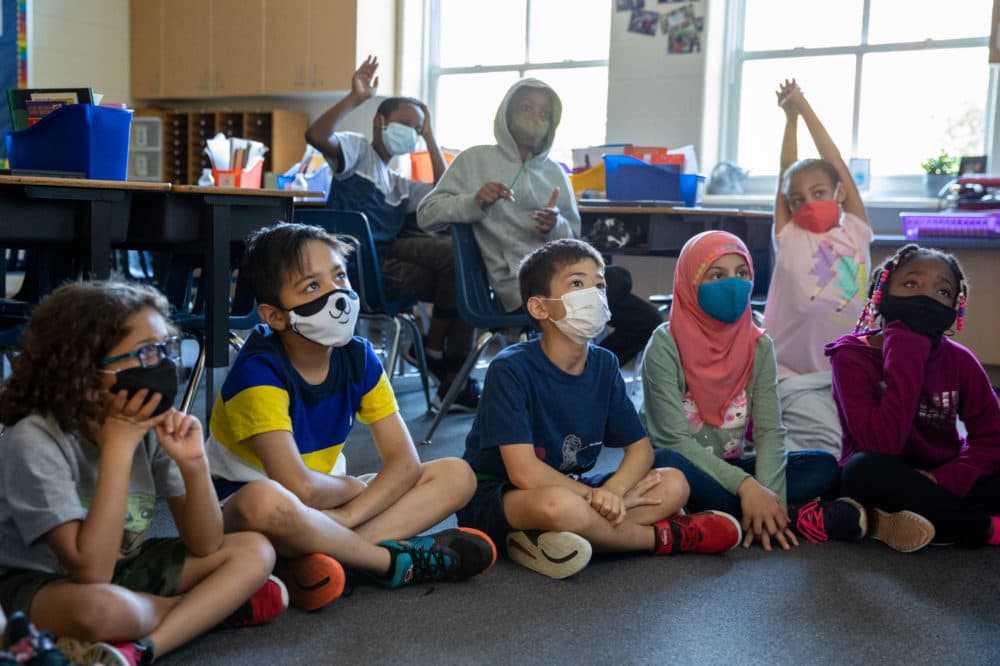Advertisement
Commentary
'Best schools' lists are meaningless — and could make segregation worse

U.S. News and World Report has begun ranking elementary and middle schools. Those at the top are celebrating. Those near the bottom are likely fielding angry phone calls. And U.S. News is laughing all the way to the bank.
As many Americans are aware, U.S. News, once an actual newsmagazine, pioneered college and university rankings. In fact, that was soon the only reason people ever bought U.S. News. Today, you can’t learn anything about what’s going on at home or abroad, but you can find rankings of colleges, hospitals and even countries.
The problems with ranking colleges and universities are well-documented and not worth rehashing. Anyone with internet access can find thoughtful and even-handed critiques. But rating elementary and middle schools is both harder and higher-stakes than rating colleges and universities. And while U.S. News may be attracting millions of new eyeballs to its website, it may also do tremendous harm to our schools and communities.
Unlike colleges and universities, elementary and middle schools are tied to neighborhoods. When students pick one college over another, it doesn’t affect the character of the neighborhood. Moreover, colleges and universities often intentionally try to cultivate diverse student bodies. Choosing an elementary or middle school, by contrast, often means relocating. And because K-12 schools draw their students from the surrounding neighborhood, if a neighborhood’s demography changes, the school's generally does as well.
These ratings are wrong. They are the product of a lazy and cynical effort to sell advertising.
School ratings, then, have the power to drive segregation. And there’s evidence that this is already happening via websites like GreatSchools.org and Niche.com. Privileged parents compete against each other in the real estate market to buy homes near “good” schools, while lower-rated schools suffer reputational harm and serve increasingly disadvantaged students.
In short, there are very real risks in the rating of K-12 schools. And in light of such risks, we should adopt a very high standard with regard to the methodological quality of such ratings. As the research community would frame it, there needs to be very strong evidence of measurement validity.
And here’s where U.S. News falls short even of its deeply flawed rivals. As the editors describe it on their website, scoring of schools is “almost entirely rooted in students’ performance on mathematics and reading/language arts state assessments.”
Let that sink in. How are they rating schools? They’re looking at test scores in two subject areas.
As scholars (including myself) have pointed out, Americans want their schools to do many things for young people, and test scores tell us little to nothing about most of those. We can’t learn anything about a school’s culture and climate by looking at test scores. We learn nothing about how safe students feel, how engaged they are in the classroom, or how they are developing socially and emotionally. We learn nothing about how skilled their teachers are, how strong and varied the curriculum is, or what kinds of access students have to arts and music education.
This might not seem so bad if standardized test scores actually measured how much students are learning. But they don’t even really do that. As research has shown, school-based factors explain only about 20% of achievement scores -- roughly a third of what background characteristics like family income explain. In other words, standardized test scores often tell us more about demography than they do about teaching and learning. This isn’t to say that we should ignore such scores, but it does mean that they tell us little about schools.
Does U.S. News understand how unsound their slapdash methodological approach is? It seems not. Or perhaps they’re gaslighting us when they say on their website that they “hope readers benefit from the sophistication of [their] analysis.”
These ratings are wrong. They are the product of a lazy and cynical effort to sell advertising.
But worse than that, these ratings are dangerous. By encouraging us to view education as a commodity, they foster the belief that we need to compete against each other for a limited number of good schools. In such a world, there’s nothing we can do about problems like segregation or resource inequity; all we can do is pursue our own self-interest.
